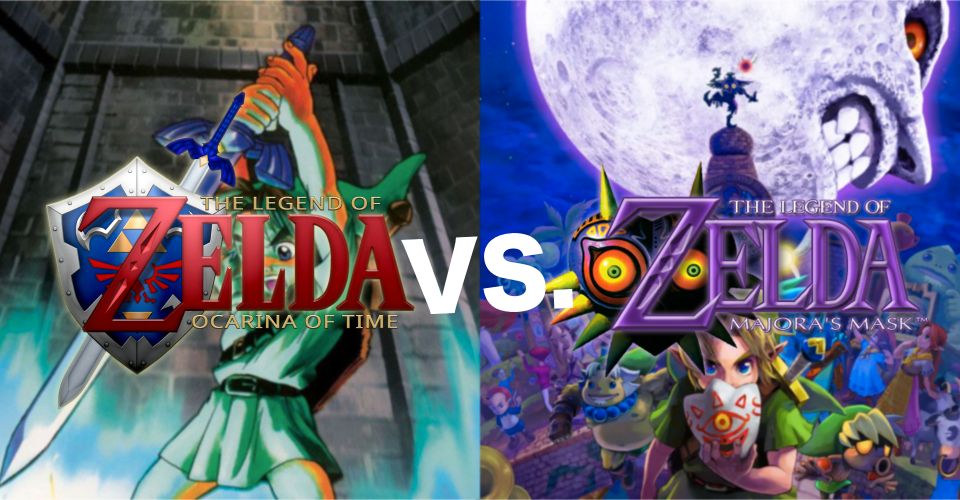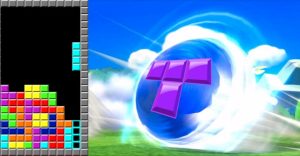Zelda: Is Majora’s Mask Better Or Worse Than Ocarina Of Time?

It’s safe to say that most entries in The Legend of Zelda franchise are iconic to the gaming world, but none may truly embody that moniker like Majora’s Mask and Ocarina of Time. For many players, these games represent their entry to the series; for those who grew up with the original games, it marked the shift toward 3D worlds and bigger adventures. Majora’s Mask and Ocarina of Time, while starring the same version of Link, tell very different stories with very different gameplay mechanics that won’t appeal to every player.
Ocarina of Time was the first of the two games, in which a young Link is granted power over time and uses it to defeat Ganondorf and his different, more primal Ganon form. This game plays like a standard action-adventure in that it advances chronologically, balances exploration with combat, and challenges the player to be aware of where they are going and where they have been. Though Ocarina of Time tells a lighter story than its successor, it’s arguably the most crucial story in the entire series since it marks the timeline split for the franchise.
Majora’s Mask is a very different experience and is quite experimental compared to the games that came before it. Its story is much darker in tone and the art direction for the world of Terminus is often unnerving and surreal. With Majora‘s Mask offering such a different experience overall and holding such high praise in the Zelda community, is it a better game than Ocarina of Time?
What Makes Ocarina Of Time The Better Zelda Game?

Deciding whether Majora’s Mask or Ocarina of Time is better or worse than the other is no easy feat, given that this kind of decision is entirely subjective. In order to make a strong argument for either party, both games need to be broken down to what makes them more desirable to different kinds of players. Since it’s the foundation on which Majora’s Mask is built, it’s best to start by looking at Ocarina of Time.
As mentioned before, this entry marked the series’ shift from 2D to 3D and laid the foundation for modern action-adventure games. Ocarina of Time gave players a dynamic, semi-open world to explore, multiple NPCs to talk to, side-quests to complete, and a camera and combat system that is still used today. The combination of these elements made Ocarina of Time a novel experience for gamers in 1998, thus making it the perfect game for newcomers to action-adventure.
While many players today are used to things like Breath of the Wild‘s still unmatched open world, there are still new gamers that aren’t used to that kind of world and find its level of expansiveness intimidating. Since Ocarina of Time was one of the first to explore the idea of a 3D open world, it had to address the same issue. Nintendo’s solution was to make a lengthy and forgiving opening level to ease players into the journey to come.
Ocarina of Time‘s opening level lets the player take control of child Link and explore Kokiri Forest for as long as they like. Giving the player unrestricted freedom and peace to learn is crucial for their future enjoyment and desire to face new challenges. Later entries like Breath of the Wild opt to just throw the player into the thick of it and while some find this approach to difficulty ingenious, other players may find it to be too intimidating and steer them away from what is otherwise a wonderful experience.
As players become more confident, the game increases the challenge by adding elements such as the concept of time and time manipulation. The titular ocarina is an essential part of Link’s arsenal that gives him control over things like weather and time in order to solve puzzles or acquire the things he needs to defeat Ganondorf. The tightness of its pacing, forgiveness for the player, and innovative story and design are some of what makes Ocarina of Time one of the best entries in the series – but does that make it better than Majora’s Mask?
What Makes Majora’s Mask The Better Zelda Game?

Majora’s Mask chooses to take the exact opposite approach and throws players right into a darker and more complex world. This darkness and ambiguity allow theories like Majora’s Mask representing the 5 stages of grief to be generated and analyzed 22 years later. Whereas Ocarina of Time anchored itself as the joining and fracturing point of the series’ continuity, Majora’s Mask anchored itself as the most mysterious and ominous point in the timeline.
Majora’s Mask opens with Link and Epona walking aimlessly through the Lost Woods, exhausted from their journey through time, only to be met by the Skull Kid and the titular Majora’s Mask. The result of this meeting is Link’s descent into Termina, a seemingly separate realm from Hyrule that is stuck in an unnerving purgatory. After Link gets a brief introduction to the concept of masks, he exits the underground only to be met by the horrifying face of the moon and the revelation that it will crash into Termina in three days.
From here, the story and gameplay revolve around Link’s ocarina and masks. Masks were introduced in Ocarina of Time, but comparing them to the masks in Majora’s Mask is like comparing night and day. The masks in Majora’s Mask, unlike its predecessor, alter Link’s body and abilities, allowing him to embody beings like a Zora or Goron in order to overcome certain enemies and obstacles. This mechanic set the bar for just how creative players can be and continues to inspire players to experiment with the masks and how they can affect Termina.
Unlike Ocarina of Time, the titular instrument is now the source of stress for the player due to the three-day time limit imposed on them. Majora’s Mask is a genre-defining time-loop game where Link must reset the three-day counter constantly, which can either create or fix disappointing side-quests and main objectives. This can make things difficult as rewinding time can often interfere with the progression of a particular objective and takes a while to get used to. Once adjusted, however, the sense of accomplishment after completing dungeons and quests is amplified by also overcoming the game’s time limit.
Ultimately, the decision as to whether Majora’s Mask is better or worse than Ocarina of Time lies in the hands of the player. Ocarina of Time presents a more forgiving and story-driven experience that is perfect for new players or those looking for pure adventure. On the contrary, Majora’s Mask offers a more difficult and gameplay-driven experience that is perfect for The Legend of Zelda‘s more experienced players or those looking for a challenge.
About The Author

















